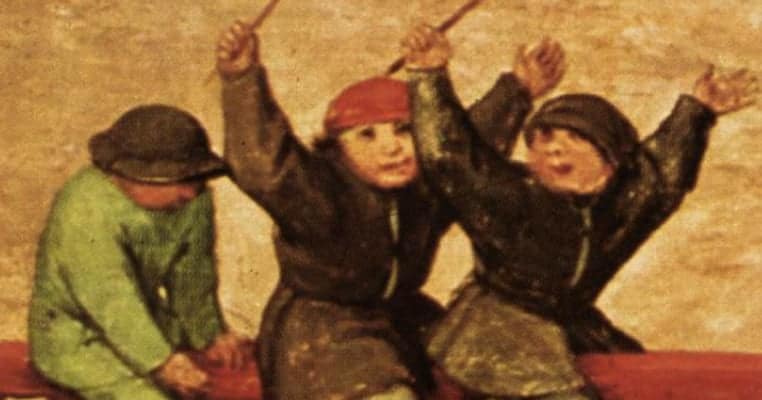When you think of playing a game or toy in today’s time period, you don’t expect anything to happen. A Red Ryder BB Gun may shoot your eye out, or you may get a broken bone from falling off a jungle gym, but today’s toys and games are relatively safe. This wasn’t the case during the Tudor Dynasty in England. Steven Gunn and Tomasz Gromelski examined 9,000 coroner inquest reports from the 16th century, and death by fun was common for these children. 1,031 deaths were registered between 1551 and 1560, and of those deaths at least 140 were 13 years old and under. The total rises if the mention of a child, or son or daughter, is mentioned to 170. At least 37 of them were playing when they died. A variety of instances killed these children, and we are going to take a look at a number of dangerous games and toys during the 16th century.
George Lord Dacre was seven years old when he died on May 17th, 1569. The boy’s death held some dire consequences since his Uncle Leonard inherited his estate and title, but he was pushed over by the Duke of Norfolk, the guardian, and step-father to George and his sisters. Leonard had joined the Northern Rebellion (when rebels tried to overthrow Queen Elizabeth I with Mary, Queen of Scots) late in 1569 and died in exile in Brussels. Luckily for Queen Elizabeth, Norfolk did not back the rebellion and decided to marry off George’s sisters to his sons to secure his dynasty and hold on the Dacre lands. But what killed Lord George causing all of this to happen? What game was he playing that caused his untimely death?

George met his untimely death “slain casually at Thetford by the fall of a vaulting Hors upon him.” as his brother-in-law, the Earl of Arundel Philip Howard, explained. There are some details missing though that the coroner’s inquest report sheds light on. At about two in the afternoon, George had eaten with other gentlemen and gentlewomen in a “dynyng chamber” at the Duke’s house in Thetford. George decided to go off by himself to play. A gallery in the upper part of the home had a “vawtnyge horse” that was four and a half feet high and six foot three inches long. It stood on four wooden feet.

George couldn’t hop on it himself, so he decided to adjust it using a “pynne of iron” that was supporting one of the back legs. The horse then collapsed on top of him, instantly crushing his head. Seven-year-olds and giant heavy horses don’t mix. His vaulting horse was worth 10 shillings, more than many real working horses. Poor George wasn’t the only horrid death during the Tudor dynasty; many others died untimely deaths due to playing in the wrong place at the wrong time and certain toys.

